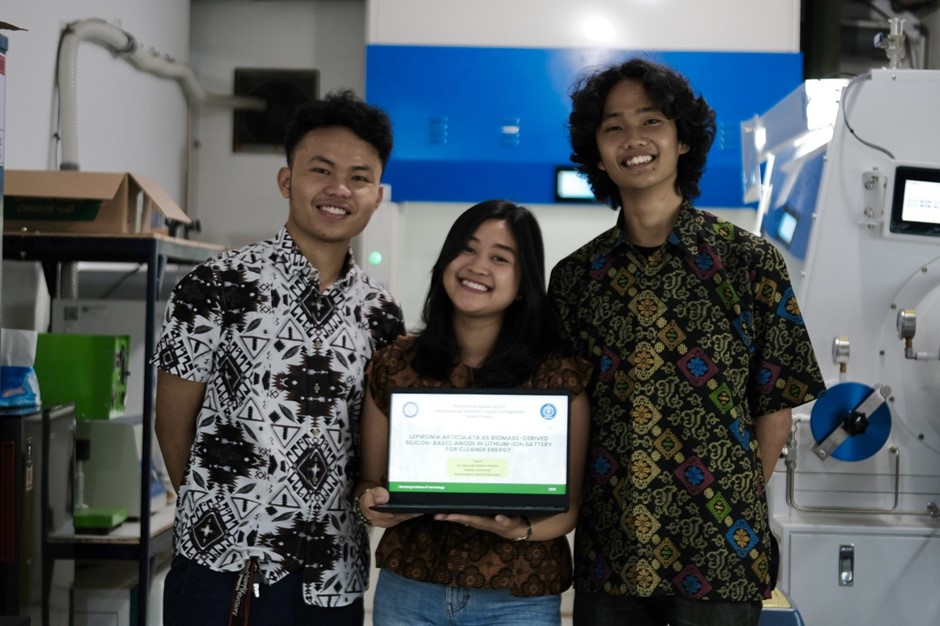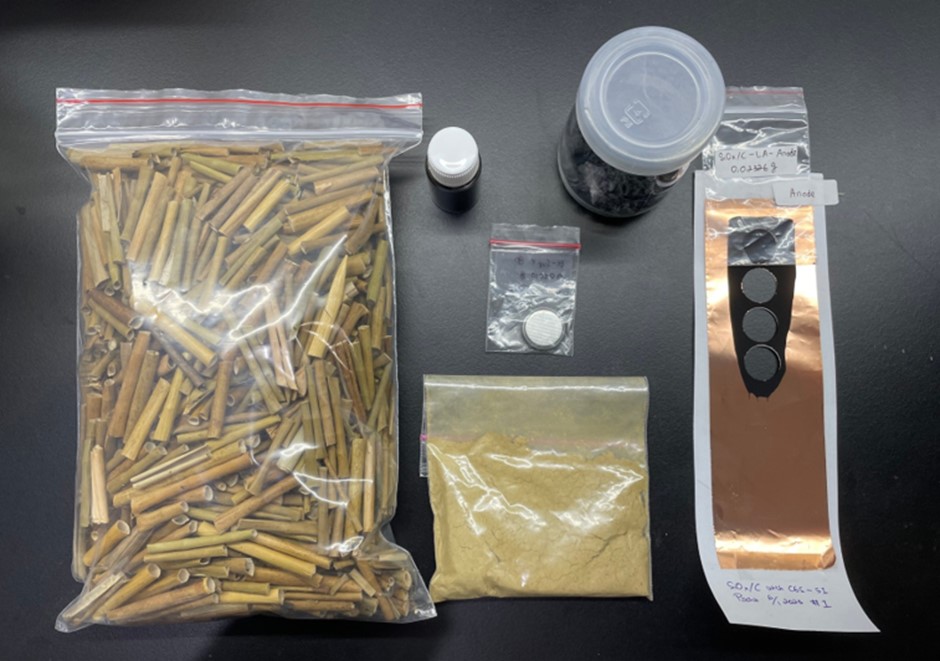ITB Material Engineering and Environmental Engineering Students Develop Biomass-based Li-ion Battery
By Adi Permana
Editor Adi Permana

BANDUNG, itb.ac.id – Materials Electrochemistry Laboratory (MEL) is a laboratory owned by Material Engineering ITB that focuses on developing material, system, and architecture for electrochemical-based energy storage. Research that they are currently working on is lithium-ion (Li-ion) battery development to advance Indonesia’s domestic battery industry.
M. Hamzah Raihan Pasha (Mechanical Engineering, 2019) is also involved in that research. “Our research is about silicon-based anode for Li-ion batteries. Silicon is extracted from biomass. We utilize natural resources such as animals and plants. There are several samples of biomass that we used, one of which is a grey sedge plant.”
Together with his partners, Paramadina Masihi Nasution (Mechanical Engineering, 2019) and Nabila Fathonah (Environmental Engineering, 2019), he participated in the Pertamina Space Up 5.0 event. This event is an annual international competition held by Universitas Pertamina. They managed to win first place.
The advantage of their battery design is that it has higher electricity storage capacity compared to conventional graphite-anode batteries. “We sought an alternative material, that is silicon. Silicon can be synthesized from renewable and environmentally friendly sources, such as biomasses,” said Pasha.
The battery theoretical electricity storage capacity sits at 4200 mAh/g, but from the test that they carried out it only managed to reach 347,37 mAh/g. “But if we compare it with graphic-based batteries which in theory can only reach 372 mAh/g and with actual numbers of around 280-300 mAh/g. Even if it is still so far away from its theoretical limit, silicon material is so much better compared to graphite,” he added.

After the Material Engineering students finished their experiments, Nabila as an Environmental Engineering student played her role in the check and balance process. “We need to examine the emission footprint of a product, not just highlighting material from biomass. The amount of energy used must be considered before we can put an ‘environmentally friendly’ label on it,” said Nabila.
“The mining and flotation processes in the graphite extraction phase produce around 2 kg CO2eq per 1 kg of anode. Based on our calculation, the biomass harvesting process which is measured from the loss of carbon stock in biomass will only require 0,5 kg CO2eq per 1kg of anode,” she said on Tuesday (28/3/2023).
According to Nabila, biomass can be obtained from conventional farms. This process also has the potential to empower local communities.
The cross-disciplined collaboration that this team had carried out was crucial for their success. In addition to that, they also utilize a sedge plant which is an indigenous plant from Indonesia. The build up and testing phase took around two months. This success would not be possible without the supervision of Afriyanti Sumboja, Ph.D., a Material Engineering ITB lecturer.
“We hope that research on batteries will advance, seeing increasing needs for renewable energy. Moreover, there are several phenomena that we can still learn and develop so that the theoretical capacity of that battery can be achieved,” expressed Pasha.
At the end of the interview, Paramadina emphasized that Indonesia has the potential to offer a local based solution for the global issues that are happening right now.
Reporter: Maharani Rachmawati Purnomo (Oceanography, 2020)
Translator: Favian Aldilla R (Civil Engineering, 2019)

.jpg)
.jpg)
.jpg)
.jpg)
.jpg)


